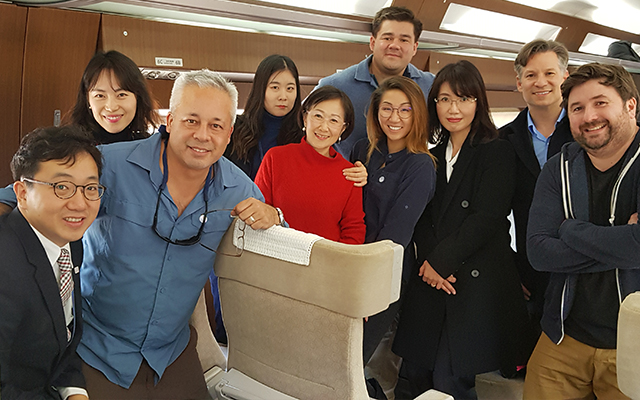- Yonsei Alumna Raises the Bar for Foreign Correspondence as a Pioneering Female Journalist June 27, 2019
-
Stella (Songhee) Kim has been reporting the development of Korea to the world for the past 33 years
When Korean Air Flight 801 crashed in Guam on August 6, 1997, a Yonsei alumna moved the world with a single article. Stella (Songhee) Kim (entering class of ’80, Political Science & International Studies), who worked as a foreign correspondent for TIME magazine, wrote a heartbreaking story about the people who survived from the tragic incident that had caused 228 deaths. TIME magazine unprecedentedly published her 10-page article as the cover story on the August 18, 1997 issue featured with her name and photo.
“I gave my best efforts to write vivid, detailed stories of the victims - their last words and moments with family and friends before departure. I wrote this article without eating or sleeping, at times crying, for over 23 hours straight. The remaining families who had booed me at the crash scene later thanked me after reading my article. Although it was a very distressing time, this story will remain documented in history and our memories.
Kim, who made her debut as a reporter for The New York Times in 1987, has been a messenger to the world on Korea’s main events as a foreign correspondent for the past 33 years. Currently working as an NBC News producer, Kim is acclaimed for pushing the depth of coverage on Korea through her work with TIME, The Washington Post and CNN. In particular, she has contributed greatly to enhancing the global community’s understanding of Korea’s development since its democratization by reporting the major changes of the nation through diverse, in-depth coverage. Recently, she has been dedicated to educating students who are committed to a career in journalism – for the past few years, Kim has been teaching courses on practices in journalism as well as internship courses on journalism in foreign media at the Department of Mass Communications at Yonsei University in Seoul, Korea.
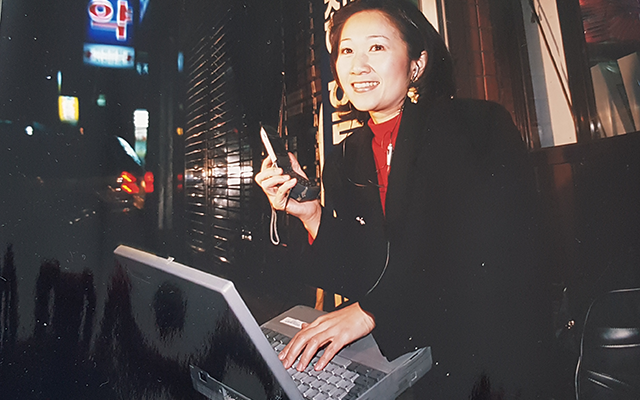 Kim covering union demonstrations from Myeongdong to Jongno in early 1990s
Kim covering union demonstrations from Myeongdong to Jongno in early 1990s“An accurate interpretation of culture is the key to foreign correspondence.”
During her years at Yonsei University as an undergraduate majoring in politics, Kim did not initially plan on becoming a journalist. She received her master’s degree in politics at Yonsei and was preparing for her Ph.D. when, at the suggestion of a friend, she did some coverage work for The New York Times and later was offered a full-time job.
“I had meant to work as a reporter for just a year, and now it’s already been 33 years,” she said. “As I bore witness to the transformation of democratization seeping into every corner of Korea, covering it all became really interesting and I was convinced that this was something that I could do well,” she recalled.
“Foreign correspondence is a very specialized field in journalism. You are a cultural interpreter – you need to accurately observe events taking place in Korea and convey the information clearly and objectively to other countries that have different cultures and different ways of thinking. Some reporters write stories that seem strange or irrelevant due to biased cultural interpretation. You must understand the uniqueness of a situation and add cultural context that your audience can relate with. Foreign correspondence is not simple interpretation or translation. It’s a skilled practice that conveys cultural context objectively.”
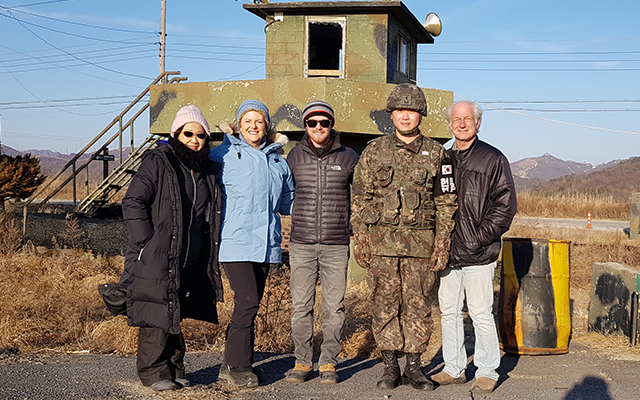 Kim in Cheorwon covering migratory red-crowned cranes from North Korea (Feb. 2019)
Kim in Cheorwon covering migratory red-crowned cranes from North Korea (Feb. 2019)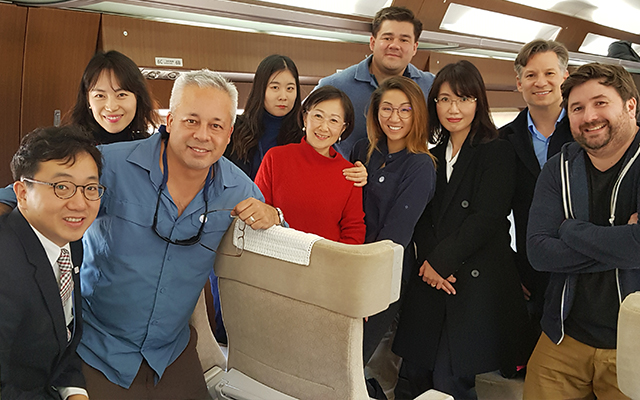 Group photo of reporters after ROK President Moon Jae-in’s inaugural press conference
Group photo of reporters after ROK President Moon Jae-in’s inaugural press conference
ahead of PyeongChang Winter OlympicsOvercoming discrimination and prejudice by believing in herself
Early on, Kim was a rising foreign correspondent with excellent foreign language skills and cultural knowledge but admitted that her career path was not all smooth sailing. She was subject to blatant exclusion and discrimination as a young foreign journalist in her twenties - a time when prejudice against female reporters prevailed.
"At the time, when I arrived at the scene with male colleagues, I was often blocked because people would dismiss me as a secretary or interpreter. Some even requested a male reporter instead of me – others would ask me completely irrelevant questions or behave inappropriately because I was a woman. But I had to power through because I was a reporter. I knew that I was doing the right thing, so I endured. It would have been a very difficult time for me had I not believed in myself.”
Kim is known for refraining from having private meetings with sources, which is uncommon in the media world. “I knew some reporters get information from sources during dinners or while having drinks, but I didn’t think it was worthwhile,” she commented. “I couldn’t get access to a lot of information if I didn’t participate in these gatherings, but I trusted in my own abilities and was able to get the necessary information from direct reporting.”
“We must constantly change according to the changing times.”
Kim emphasized that reporters should become multi-players in today’s journalism era when there are no strict borderlines.
“Today’s journalists shouldn’t do just one thing. I am a producer, but I also plan news items, create news segments, and even report in certain situations. I also work as an interpreter. There is no specific distinction within journalism anymore, so we have to change our roles according to the changing times. I was ready to become a news producer because once I witnessed the convergence of print and broadcast media, I had branched out from my traditional reporter role and did broadcasting work whenever I had the chance.
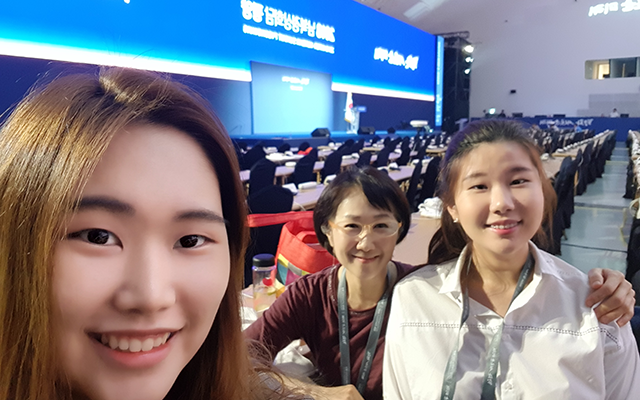 Kim at Inter-Korean Summit in Pyongyang with her internship course students
Kim at Inter-Korean Summit in Pyongyang with her internship course students“When a new tech gadget comes out, get it and try it out,” she said. “Since I work with my juniors now, I feel the need to stay on top of new trends and continue learning new things.”
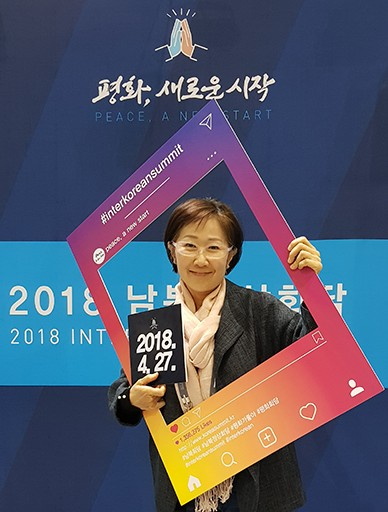
Kim also advised not to neglect to find yourself through constant learning.
“It’s all about finding what you’re good at, what you can do with dedication. Living by standards set by others is living another person’s life, not yours. Compete with only yourself, according to the standards you set for yourself. When you find yourself in the process, you can stand up for yourself as well as for others.”
show mobile menu
mobile menu

